Introduction:
Why Prices Have Become More Important Than Ever Before
Sewing machines find themselves in an uncomfortable spot: with their precision of flow and their rights of dial settings, they are precision instruments on one hand, and work horses of sorts on the other. By 2025, products encompass mini machines at less than 50 dollars all the way to professional-grade longarm quilting machines that can be more expensive than a small car. Understanding what will motivate these prices-as well as which features will truly enhance your outcomes-avoids two expensive errors: overspending on bells and whistles you will never use or under-spending on a machine that will not handle your fabrics leading to an upgrade several months later.
This guide demystifies pricing in all machine families and gives a clear picture on how to shop smart at any budget level. You will get to know where the money is spent (build quality, motor type, feed system, electronics, software), what should be in each tier and what is optional and what is essential. In the US/EU or South Asia (including Pakistan), Middle East, or Africa, the philosophy will be the same-even though the street price can vary by the currency, taxes and distribution.
Part 1: The Big Pricing Levers (What You are Actually Paying To)
There are deep forces that underlie price – get to know them before you start comparing numbers:
Build & Frame
Internal metal frames and firm chassis minimize vibration and maintain stabile timing and last longer.
Hard outer bodies are okay, but the supportive structure you would like to be more solid.
Motor & Drive
Motors vary in the simple AC motors to brushless DC motors with a higher torque and smoother low-speed control.
Higher torque, steady smooth crawl (1 2 stitches per second) and even power through seams thick seams are heavier costs and well worth it on different fabrics.
Higher torque, more smooth crawl (1-2 stitches per second), and consistent power through thick seams all come at an increased price–and it is worth it when working with varied fabrics.
Feed System &Pressure Control
Box-feed systems, or dual feed/integrated walking feed (brand terms: IDT, AccuFeed, etc.) enhance tracking.
The presser foot pressure is adjustable and, in my opinion, the most under-rated requirement of sewing chiffon and denim on a machine with presser foot pressure.
Electronics & UI
Speed limiter, computerized control, needle up/down, one-step buttonholes, and clear display create more convenient use.
Touch panels are more expensive, as are reliable sensors, (auto buttonholes, thread sensors, etc.).
Sewn Elegance and Pages
Accurate straight stitch: single hole plate option (or equivalent) improves accuracy of garment/quilting on fine fabrics.
Accessories & Expandability
Additional feet (walking foot, 1/4″ piecing, zipper, buttonhole, overedge), extension tables, knee lifter, straight stitch plate and specialty bobbins also add expense.
This is priced higher by embroidery modules, larger hoops, software and Wi-Fi update capability.
Brand, Warranty, Service
Brands with good service networks, long parts availability, and warranty mainly tend to be priced higher- the total cost of ownership may seem a bit lower due to the reliability and uptime.
Region & Distribution
Chapter 2: Price Ranges by Type of Machine (2025)
US style prices are priced in USD. Limited amounts: In Pakistan or similar markets local ranges also differ by currency and import taxes, we add a note below each category to enable you to localize your expectations.
Mini and
What they do: Lightweight devices to make repairs quickly and- very lightweight fabrics.
Price Range: $15 to 50 (can reach 60 $ 90 with some branded mini)
It is only worth purchasing when you require emergency hemming, or you need a travel kit.
What you lose: Strength, stitch finish, cloth control, longevity.
It is common in the range of 1,000-7,000. Awesome either as an alternate or not primary machine.
Entry-level Mechanical (Domestic)
What they do: Straight and zig zag and a little bit of utility stitches.
Pricing: 100-250 (lots of good examples between 200 and 300$ as well).
Essentials in this range: straight stitch clean, respectable zigzag, at least 1 step or 4 step buttonhole, free arm, LED light.
Suitable to: Repairing, plain clothes, craft on cottons and lightweight woven.
Trade-offs: Poor fine control, less features, can be difficult with thick seams.
Roughly 10,000-25,000PKR (Depends on the trusted brand of the unit).
Lower-Mid Computerized (Home)
What they do: Domestic machines that have electronic speed control, up/down needle, several buttonholes and a better stitch selection.
The price range is between 250 to 500 dollars with a sweet spot of 300 to 400 dollars.
Speed limiter, smoother low-speed control, more consistent buttonholes and better feed than basic mechanicals.
Application: Pros that need simple successes on cottons, knits, and every now and again denim hem.
In Pakistan Rs. 25,000-Rs. 70, 000 or more depending on the features and brand.
Mid Range computerized (Home /serious Hobby)
What they have: Full featured domestics with upgraded motors, improved feed, expanded stitch repertoire and good buttonholes.
The range of its prices is between 500 and 900 dollars.
Expectations: presser-foot pressure is adjustable, great working with knits, more uniform power performance on layered seams, and improved UI.
Good for: Those who are just beginning to make garments, small home-based businesses and quilters.
Rs. 70,000- 150,000 and above; this varies with the availability and warranties.
Upper-Mid /Quilting-Friendly Domestics
What they have: more harp space, knee lifter, precision feet, straight-stitch plate alternatives; excellent lighting.
Cost: $900- $1,500.
Suitable to: Aspiring clothing manufacturers, serious quilting, work with a combination of fabrics, high precision.
Rs. 150 000-350 000+; accessories and tables increase the price.
Heavy-Duty Domestics
(Straight-Stitch Specialists and Hybrids)
What they do: More robust motors and drive systems characterized by power and speed;
some are single-stitch only (e.g. semi-industrial table-top).
Cost: $600 to 1200 (from some expensive straight-stitch domestics around 1500 dollars).
Why to use it: You frequently sew denim, canvas, work clothing, leather (using appropriate needles / feet), and would like speed and precision on straight seams.
Trade-off: Decorative stitches are fewer (or absent); zigzag on straight-stitch models is gone.
Pakistan/local note: 120-300 000 and more. Take into consideration service availability Serge’s / Over lockers (2 / 3 / 4 / 5 Thread)
What they do: Edge finishing, knits set seam, rolled hems; must have accessory when it comes to clothing.
Price Range: Entry/basic: 200-400$ Mid: $400-$800 quicker threading, finer capabilities of differential feed)
Serge’s / Over lockers (2/3/4/5 thread)
What they do: Edge finishes, seam construction on knitted fabrics, rolled hem; must have accessory to apparel.
Price Range: Entry/basic: 200-400 Mid: 400-$800
(threading better, finer control of the feed) Air-thread / premium: 900-1600 and above
Those who need one: People who are either sewing knit garments or are after professional seam finishes.
Pakistan/local note: 35 000 to 250 000+, according to threading technology and brand.
Overstitch Machines
What they are used in:
T-shirt hemming and binding fabrics that stretch; used along with a serge.
Price: anywhere between 300 and 1000+ (combo serge/overstitch machines are more expensive).
Who will find it useful: Apparel sawists making a lot of knits; boutique makers.
In Pakistan/local note: 50,000-200,000+. Sample and test before you purchase- quality of feed is important Embroidery and Gowns/Embroidery Combo
What they are: Home sewing units that have embroidery accessories/hoops; Design importation; sometimes wireless/app control.
Price Range: Entry combo: 600-1200 Medium combination: 1200 to 2 500 dollars High end bundle: between $2,500- 6,000+ (bigger hoops, faster stitches, better software) Why they are expensive: Hoops, arm mechanics, sensors, on board editing and software ecosystems.
What they are: One-purpose hairnets of production sewing; table + servo motor.
Cost: Common lockstitch units cost between 500 and 1500 dollars, more costly machines are specialty lockstitch machines.
What to buy: Tailors, upholstery stores, uniform stores and places that sew each day.
Pakistan/local note: a wide range of 150,000 pakis to a number of lakes with respect to head + table + motor + delivery.
The Longarm Quilting Systems Size: Wide-body machines used to quilt/drape whole quilts in free-motion/meander style, frequently with stitch control and with automatization.
Circa Cost: Ten to thirty thousand dollars and up.
Who would need one: Mostly professional quilters or artists:
very big for the majority of homes. Packaged prime; factor in total landed cost, space and power.
Part 3: Common Budgets & What to anticipate (realistic benchmarks) Less than 150 dollars (PRs. Less than 25,000):
Mini/handheld or very simple mechanicals Perfect to master stitches on cotton, not the best to use on knit or other humps on denims, also not preferable when using fragile fabric.
The price range is between 150-300 dollars (25, 000-55, 000). Easy to get entry mechanicals or simple computerized machines Good straight/zigzag, easy-to-sew buttonholes, LED, free arm.
Buy the highest quality build you can find; skip on stitch count sizzle over substance core building characteristics
Mid-range computerized sweet spot.
Speed control, needle up/down, additional buttonhole control, enhanced feed. It is the most economical fit range of versatile home garment sewing.
Prices are $600-1,200 (/sump substituterblesqu nick consequences grassy
Mid to upper-mid; domestics, with heavy-duty or quilting. Able to adjust presser-foot pressure, improved torque, accessories, extension tables, knee lifter on selected models.
The best choice to make is non-destructive, especially when you use knit and denim and delicate fabrics as a sawist.
High class domestics or mid level embroidery combinations; large throat, high finish feed, optimized lighting. Serious amateurs, small capacity studios, designers in need of precision and comfort. 2,500+ ( 700,000+):ナ Street combo, A-brand flagship, or similar rigs. Get it to use heavily, in business or under mission-critical conditions–but only when you need the functions.
Part 4: Realities of Regions (Quick Notes) US/EU: Broad selection, sterling warranties;
the street price may vary widely with manufacturer suggested retail price. Check out accessory packages and seasonal promotions.
South-Asia (Inc. Pakistan): There has been a co-existence of parallel imports and local distributors. Prices are base on many factors; emphasize availability of official services Middle East/Africa:
Duty can make a final cost high; consider travel/service logistic in your budget.
Online versus Local dealer: Online may be cheaper vs local dealer adds value through training, setup, warranty handling and faster turnaround.
Part 5: The changing nature of pricing (2020 2025)
Inflation and fluctuations of the currency pushed the prices up, more so on the premium lines.
Electronics were better, such as increased use of brushless motors and more consistent low-speed control at middle prices. Lighting& ergonomics enhanced (multiple LED arrays, better throat spaces). Software & connectivity trickled down; even entry level embroidery machines cable in designs over USB/app.
Sustainability & serviceability took hold–brands that support parts prolong their life to command a premium.
Part 6: Budget with the Different Practical Scenarios Bargain beginner on a very limited budget (hemming/alterations, light clothes):
Price range:$150-$300 / 25k-55k. Look; quality straight stitch, one-step buttonhole, good LED, free arm. Skip: huge stitch counts, complicated screens. Domestic garment manufacturer (:) woven + knits + sometimes denim:
Power user (coats, jeans, odd fabrics: quilts occasionally):
Price range: 600-1200$. 60-120000 (in Rupees). Can also look at: ill stronger motor sense, speedy feed, knee lifter, extension table, straight plate. Bulky knitwear store (T-Shirts/leggings): Add a serge ($40051917900) and you might want to consider a overstitch ($4007001000).
Your straight-stitch home sews and it stays to build details.
Embroidery shop ( decide/volunteer/opt: (logos/monograms/applique:
Prices of Combo machine range between 1,200 and 2, 500; bigger hoops are more expensive. Everything to do with the cost of software, stabilizers and hoops. Tailoring/Upholstery/Production Industrial straight-stitch sewing head + servo table: 700-1500 typical. Change specialized heads (bar-tack, buttonhole) when necessary by workflow. expert quilting servo Longarm with frame: 10,000-30 000+. There are budget requirements on space, power and maintenance.
Part 7: What Not to Get (If You Don Not Need It)
Hundreds of ornamental stitches you will never use. Large touch screens when you are purchasing more to straight seams. Broidery modules when you will not ever use them-use down payment to improve your sewing machine They buy the premium brand at just the symbol without thinking of the access to service and the real requirement they have.
Part 8: Red flags (excluding pricing: to be avoided)
Smoke, sparks or visible sparking, grating or clanging. Jumpy response of the pedal; not possible to sew slowly and smoothly. Tid-szed bird-nesting or thread-missing on plain cotton. Excessive fabric drift on a hands off straight-line feed test. Salesman rejects actual testing of fabrics No local service or lack of clarity of warranties
Part 9: Price Table by Type (2025):
Quick Reference Type:
Typical 2025 Value (USD) Notes Mini /Handheld $15-/td deceptively powers fakes to the needing to be cut, just 50 to create a and shortages
deceptively provides feeds to a persona rent cleverly causes of leading, because of optical, because of and partial shortages
Entry Mechanical (Home) $100 t0 250 (up to 300) elementary usefulness, economic material Lower-Mid Computerized (Home)
$250250150500 Speed control, needle up/down Home/Hobby (Computerized) $500 to $900 Improved feed, button holes, pressure control
Serge / Overlocked $200 1600 Air-threading at the upper end Overstitch $300-$1,000+ Knit hems; used in conjunction with serge Domestic Utilizes ember 600-6000+ hoop size, speed,
software add cost Industrial Lockstitch (Head+Table) $500 1500 and up Production sewing
; extra specialty heads The Longarm Quilting System $10,000-$30,000+ Pakistan/ local shorthand: As a ballpark figure, most prices in the mid range USD scale up to PR ranges between 3- and five times, depending on currency and taxes.
Check up to date local prices Example Shopping Paths by Budget
Part 10 The logic around 200 (35k-55k):
A reliable entry mechanical model, a prominent brand (Brother / Janome / Singer) lineups. Clean straight stitch and simple buttonhole.
Just under 400 (INR70k-110k): An excellent computer driven model with speed control+ needle up/down; better knit handling, day in day out comfort
. Approximately $800 (150k-250k): domestically-made upper-mid with more engine touch, changeable pressure setting, improved light source, potential knee lifter unit already sufficient to all kinds of garments.
Over 1,500+ (350k+): High end domestic or embroidery combo set; do not purchase unless specific industry (precision quilting, large quilting needs or embroidery business).
Part 11: Frequently asked questions
Q1Is it possible to use one machine as a result of which everything can be made of clothes?
A powerful mid-or upper-mid domestic with adjustable pressure, good feed deals with most garments. To enhance knit-heavy applications, consider a serge, to do pro knit hems go with a overstitch.
Q2 Do computerized machines always outdo?
They provide fastness regulation, memory and enhanced buttonholes- excellent with garments. Mechanical machines are less complicated and sturdy; decide on what you find more comfortable and fabric combination.
Q3Why is one machine similar in count of stitches and a different price?
You are not buying stitches, but you are purchasing motor torque, feed quality, build rigidity, electronics reliability, lighting and service network.
Q4 How much is too much?
A good starter is about 150-300 dollars ( 25k-55k ) With a bit of stretch to $300500, the extra control/feature gives you ease of learning and increasing practical range of the machine.
Q5 At what point is industrial worth it?
When you are working everyday on behalf of clients where fast, durable, and to accommodate a table and servo system is a possibility. Domestic machines are not set up to be used to produce continuously.
End Result: Pay To Make Your Sewing Better Not the Sticker
Sowing-machine prices in 2025 are engineering facts. Among all the budgets, it is important to rake the four following pillars:
The quality of stitches & low speed (Smooth crawl is better than top speed).
Feed consistency& adjustable presser-foot pressure (on both Chiffon and denim).
Practical features that save time such as needle up/down, dependable buttonholes and good lighting.
Service / support (warranty, local dealer competence, availability of parts).
Stick with the most basic machine that covers all your projects and fabrics and don’t be afraid to purchase the appropriate companion machine (serge, overstitch) instead of using one machine to perform multiple functions. Write your budget with the amounts above, require an actual test in a store with your materials and bargain about valuable accessories. Do that and not only will your money be well spent, but sewing will be easier, your results cleaner and your machine long-lived.
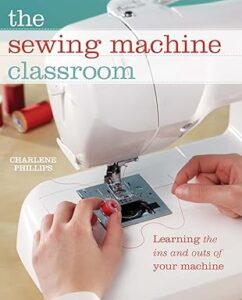
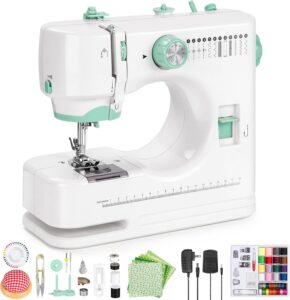
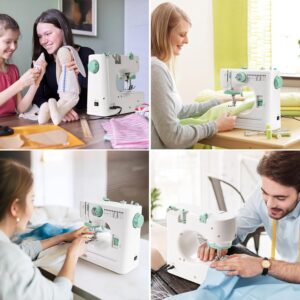
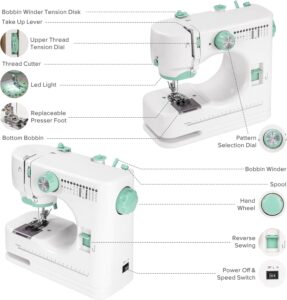
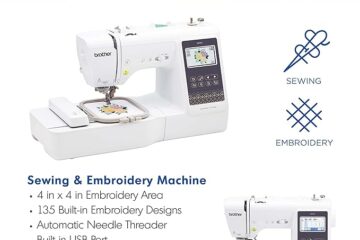
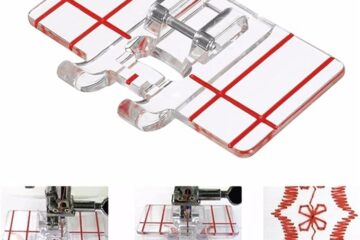
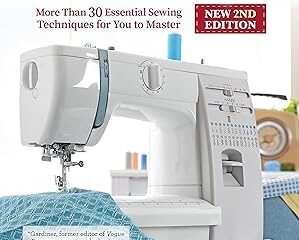
0 Comments